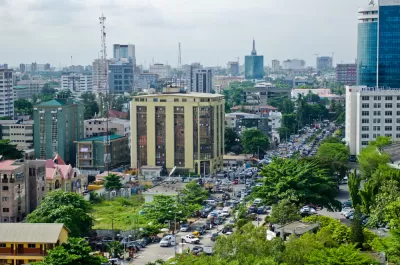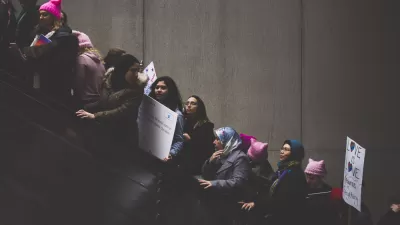Rising populations and political challenges complicate the future development of Africa's major metropolitan centers.

The traffic-choked streets of Lagos, Nigeria may be a harbinger of the future in the continent's major cities, many of which are experiencing explosive population growth and urbanization, in some cases with little comprehensive planning to mitigate the effects of unchecked growth. An article by Max Bearak, Dylan Moriarty, and Júlia Ledur describes the projected growth of five African cities, the legacy of colonial planning, and the lessons they hold for the future of the continent.
In Lagos, Nigeria, overcrowded housing conditions and inadequate infrastructure force many people to live in densely packed quarters lacking basic utilities. In countries like Sudan and Congo, war and other political crises push refugees into cities, creating a massive influx of people seeking safety and opportunities, exacerbating poverty in urban centers.
Meanwhile, China is gaining influence in African nations as it provides government-backed loans to support infrastructure projects in cities such as Djibouti, Luanda, Angola, and Lubumbashi, Congo. Overall, "Chinese institutions invested more than $200 billion in the transportation and power sectors across Africa between 2000 and 2017, according to the AidData initiative at William & Mary, the Virginia college."
Highlighting the urgency of the need for improved infrastructure and institutional reform, the article notes that "Several recent studies project that by the end of this century, Africa will be the only continent experiencing population growth. Thirteen of the world’s 20 biggest urban areas will be in Africa — up from just two today — as will more than a third of the world’s population."
FULL STORY: AFRICA’S RISING CITIES

Study: Maui’s Plan to Convert Vacation Rentals to Long-Term Housing Could Cause Nearly $1 Billion Economic Loss
The plan would reduce visitor accommodation by 25,% resulting in 1,900 jobs lost.

North Texas Transit Leaders Tout Benefits of TOD for Growing Region
At a summit focused on transit-oriented development, policymakers discussed how North Texas’ expanded light rail system can serve as a tool for economic growth.

Why Should We Subsidize Public Transportation?
Many public transit agencies face financial stress due to rising costs, declining fare revenue, and declining subsidies. Transit advocates must provide a strong business case for increasing public transit funding.

How to Make US Trains Faster
Changes to boarding platforms and a switch to electric trains could improve U.S. passenger rail service without the added cost of high-speed rail.

Columbia’s Revitalized ‘Loop’ Is a Hub for Local Entrepreneurs
A focus on small businesses is helping a commercial corridor in Columbia, Missouri thrive.

Invasive Insect Threatens Minnesota’s Ash Forests
The Emerald Ash Borer is a rapidly spreading invasive pest threatening Minnesota’s ash trees, and homeowners are encouraged to plant diverse replacement species, avoid moving ash firewood, and monitor for signs of infestation.
Urban Design for Planners 1: Software Tools
This six-course series explores essential urban design concepts using open source software and equips planners with the tools they need to participate fully in the urban design process.
Planning for Universal Design
Learn the tools for implementing Universal Design in planning regulations.
City of Santa Clarita
Ascent Environmental
Institute for Housing and Urban Development Studies (IHS)
City of Grandview
Harvard GSD Executive Education
Toledo-Lucas County Plan Commissions
Salt Lake City
NYU Wagner Graduate School of Public Service



























